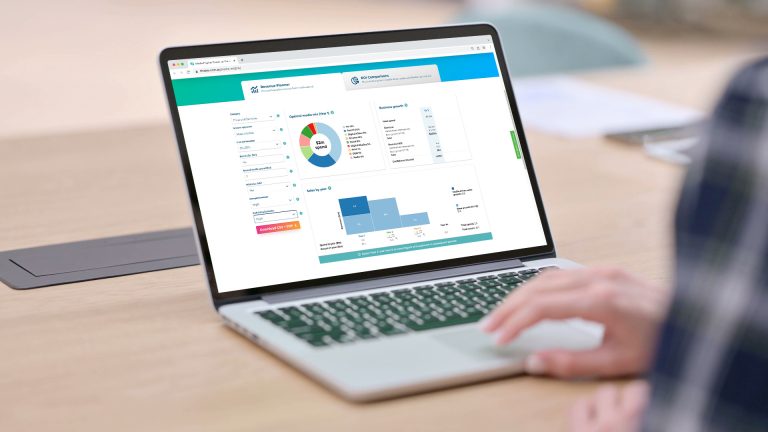The Benchmark Series Tranche 1: World-first study reveals how well video advertising works on different media platforms
Posted on 30th August 2017 in Media Releases


Posted on 30th August 2017 in Media Releases
Groundbreaking research from respected marketing science academic Professor Karen Nelson-Field has uncovered new insights into how and why video advertising works for brands across different media platforms.
The first tranche of Professor Nelson-Field’s Benchmark Series, commissioned by ThinkTV, makes a number of significant findings that are designed to help advertisers and their agencies get the best out of video advertising. Professor Nelson-Field used bespoke A.I. machine-learning technology and eye-tracking software to minimise human bias in her team’s data gathering, which is explained below* and here, in these short videos.
Benchmark Series Methodology in 2 minutes
Benchmark Series Methodology in 4 minutes
The study found that advertisements viewed by consumers on Facebook, YouTube and TV all generated a positive sales impact for brands. Of those platforms, TV advertising generated the greatest sales impact and attention, scoring significantly higher than Facebook and YouTube on both measures, with Facebook ahead of YouTube.
KEY FINDINGS:
*** Attention scores were based on a number of factors including active ad viewing, active ad avoidance and passive ad avoidance, measured for each second that a commercial ran.
Professor Karen Nelson-Field said: “The Benchmark Series gets under the hood of all the major video advertising platforms and – using in-home, natural viewing conditions – provides a clear understanding of why certain platforms drive higher levels of attention and greater levels of advertising impact than others. It will help advertisers to make informed inventory choices when selecting media.”
Kim Portrate, Chief Executive of ThinkTV, said: “The first thing to note about this study is that it proves video advertising works on all these major platforms – but it also shows that not all media is equal when it comes to video advertising.
“It is well-known that TV content is professionally produced, of broadcast quality and is highly brand-safe. That is in contrast to the glut of sub-premium, user-generated content that can feature heavily on social media platforms. Karen’s results help to show why this matters for brands. It’s perhaps little wonder that many social media platforms are trying to dip their toes into TV-style content themselves – put simply, it works best for brands.”
Professor Nelson-Field will unveil these results from The Benchmark Series in Adelaide at ThinkTank on August 29 and tranche two of the findings at ReThinkTV on September 14. Register here for ReThinkTV.
* What was the Methodology?
Using bespoke A.I. machine-learning technology and eye-tracking software, 2583 Australians were exposed to 18,219 advertisements under natural viewing conditions in the home. Respondents were then tasked to go shopping in an online shopping mall, where they were able to consider up to 38,745 different brands including the ones they were exposed to in the study’s advertising. Called ‘Discrete Choice Modelling’, this approach is widely used and is academically-validated as the most accurate way to reveal consumers’ actual choice of brand as opposed to mere intention to buy. For more on methodology see explainer videos here, which can be embedded into stories Benchmark Series Methodology in 2 minutes, Benchmark Series Methodology in 4 minutes.
N.B. Professor Nelson-Field measured TV viewing on TV sets, desktops and laptops and measured Facebook and YouTube viewing on laptops and desktops. The second phase of the Benchmark Series will capture mobile viewing data for TV, YouTube and Facebook, providing further insights that are scheduled to be released in 2018. Professor Nelson-Field expects, based on previous, unreleased work she has carried out in this field, that the same patterns for attention and sales impact will hold when the mobile results are released.
** How is STAS measured?
STAS is the acronym for Short-Term Advertising Strength. STAS is calculated by determining the proportion of category buyers who bought a specific brand having not been exposed to that brand’s advertising, and comparing this to the proportion of category buyers who were exposed to advertising and went on to buy the brand. A STAS score of 100 indicates no advertising impact in that those who were exposed to the advertising were just as likely to purchase as those who were not. A score above 100 indicates that the advertising had an impact on sales.
About Professor Karen Nelson-Field
As head of Professor of Media Innovation at the University of Adelaide, Karen is globally recognised as an innovator in media research. Her work has been referenced by the likes of Forbes, Fox Business, Bloomberg Business and AdAge, and her book, Viral Marketing: The Science of Sharing, is a best seller in its category. Karen was awarded the NewsCorp ‘Women in Innovation’ award in 2014 & 2015 and has also received the Telstra Business Women’s Award for ‘Business Innovation’.

News / Media Releases / 13th Aug 2024
Total TV revenue decreased 8.1 per cent for the 12 months to June 2024, while Broadcaster Video on Demand is up 12.7 per cent. ThinkTV has announced the Total TV […]

News / Media Releases / 9th Feb 2024
Total TV revenue decreases 10 per cent for the 12 months to December 2023 while Broadcaster Video on Demand is up 10 per cent. ThinkTV has announced the total TV […]

News / Media Releases / 14th Aug 2023
Revenue for the 12 months to June 2023 hits $3.6 billion and BVOD growth continues to accelerate – up 6.1 per cent. ThinkTV has today announced the TV advertising revenue […]

News / Media Releases / 6th Feb 2023
Total TV revenue increases by 1 per cent for the 12 months to December 2022 while BVOD growth continues to accelerate – up 23 per cent. ThinkTV has today announced […]

News / Media Releases / 8th Aug 2022
Total TV revenue increases 11 per cent for the 12 months to June 2022 while BVOD growth continues to accelerate – up 53 per cent. ThinkTV has today announced the […]

News / Media Releases / 23rd Mar 2022
The Media Engine empowers marketers to create better briefs by outlining the optimal media splits to generate revenue. In an Australian first, ThinkTV has launched the Media Engine, a planning […]

News / Media Releases / 7th Feb 2022
Total TV revenue increases 20 per cent for the 12 months to December 2021 while BVOD growth continues to accelerate – up 68 per cent. ThinkTV has today announced the […]

News / Media Releases / 27th Sep 2021
A powerful new public service campaign that heroes the country’s ingenuity, inventiveness and resilience to overcoming challenges is being released nationally in a bid to boost Australia’s double vaccination rate […]

News / Media Releases / 16th Aug 2021
Total TV revenue is up 12 per cent for the 12 months while BVOD surges ahead by 63 per cent. ThinkTV has today announced the total TV advertising revenue figures […]

News / Media Releases / 19th Jul 2021
Edition Five of The Payback Series shows how to maximise return on investment by choosing channels with the ability to deliver positive ROI as well as short and long-term sales. […]